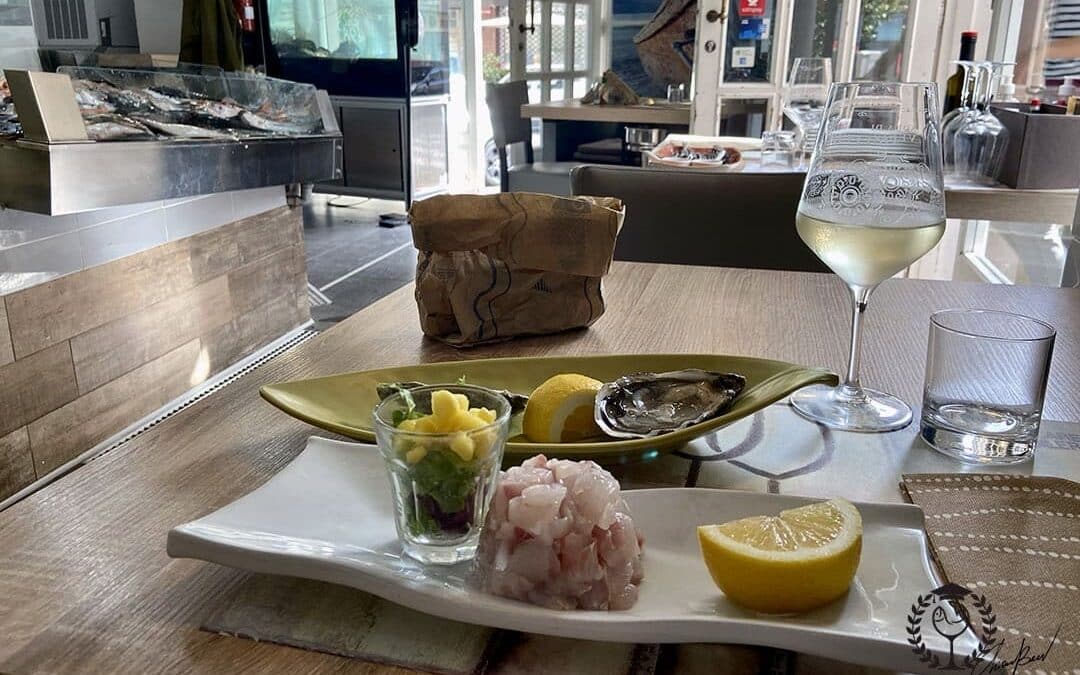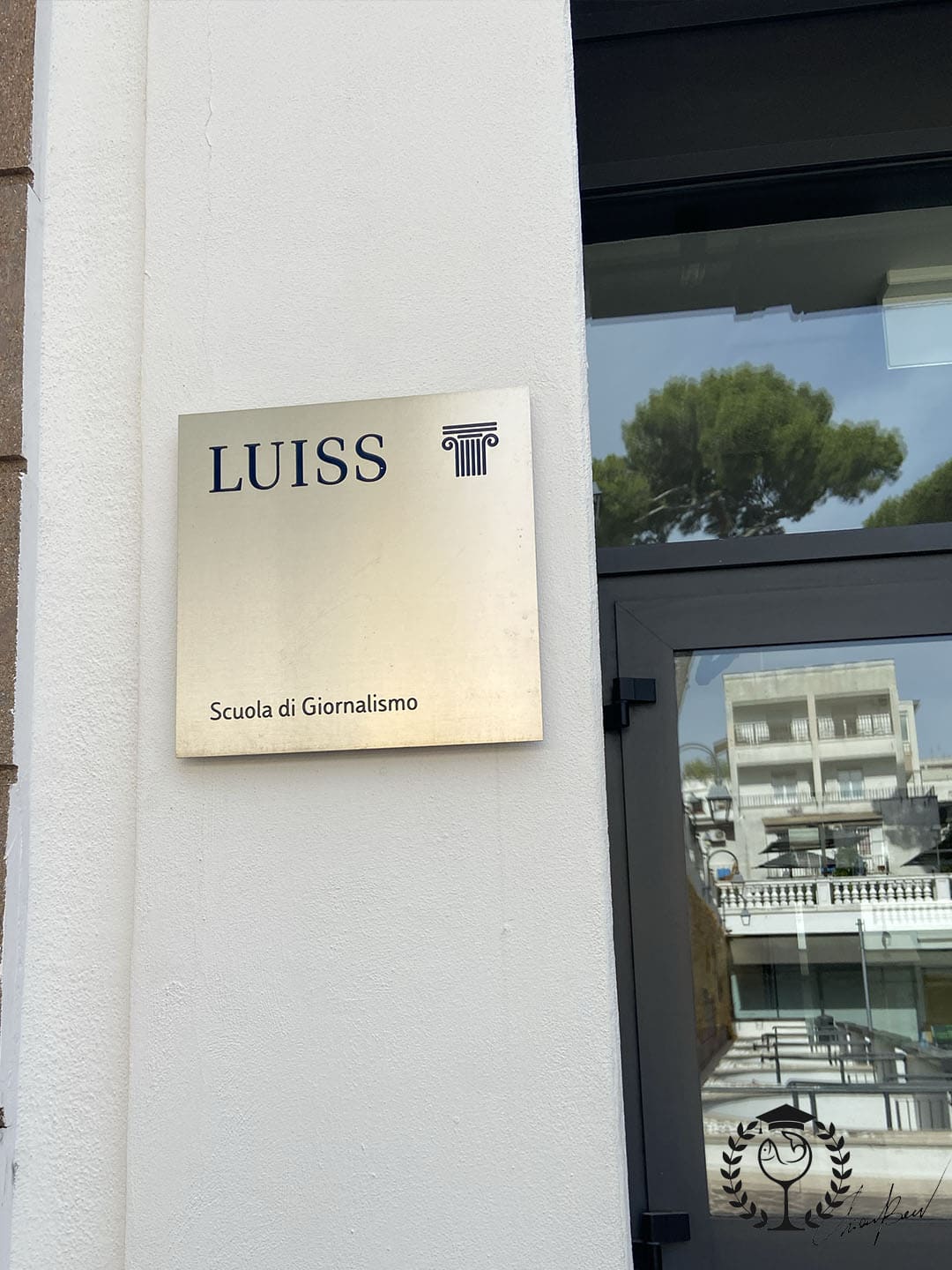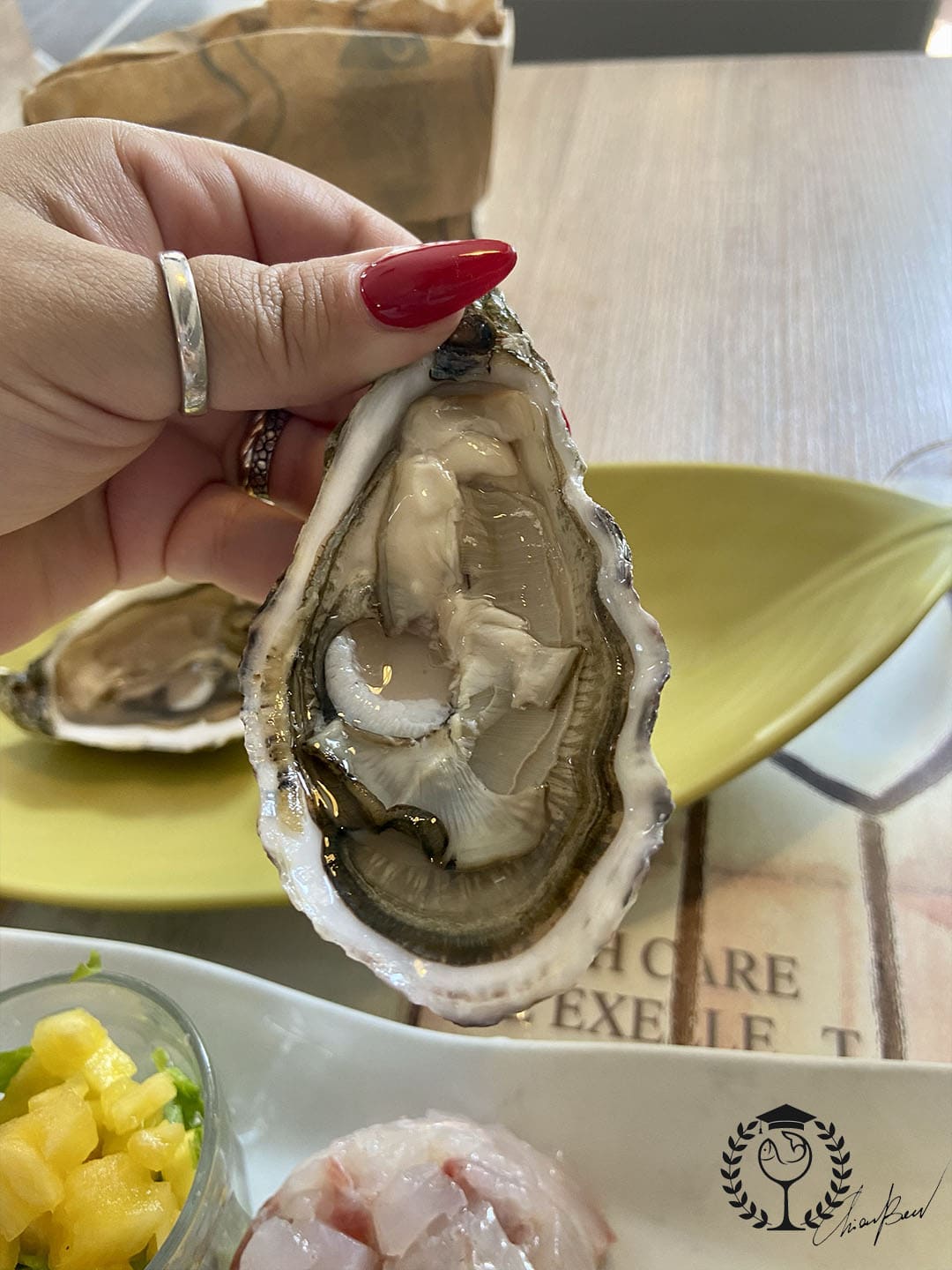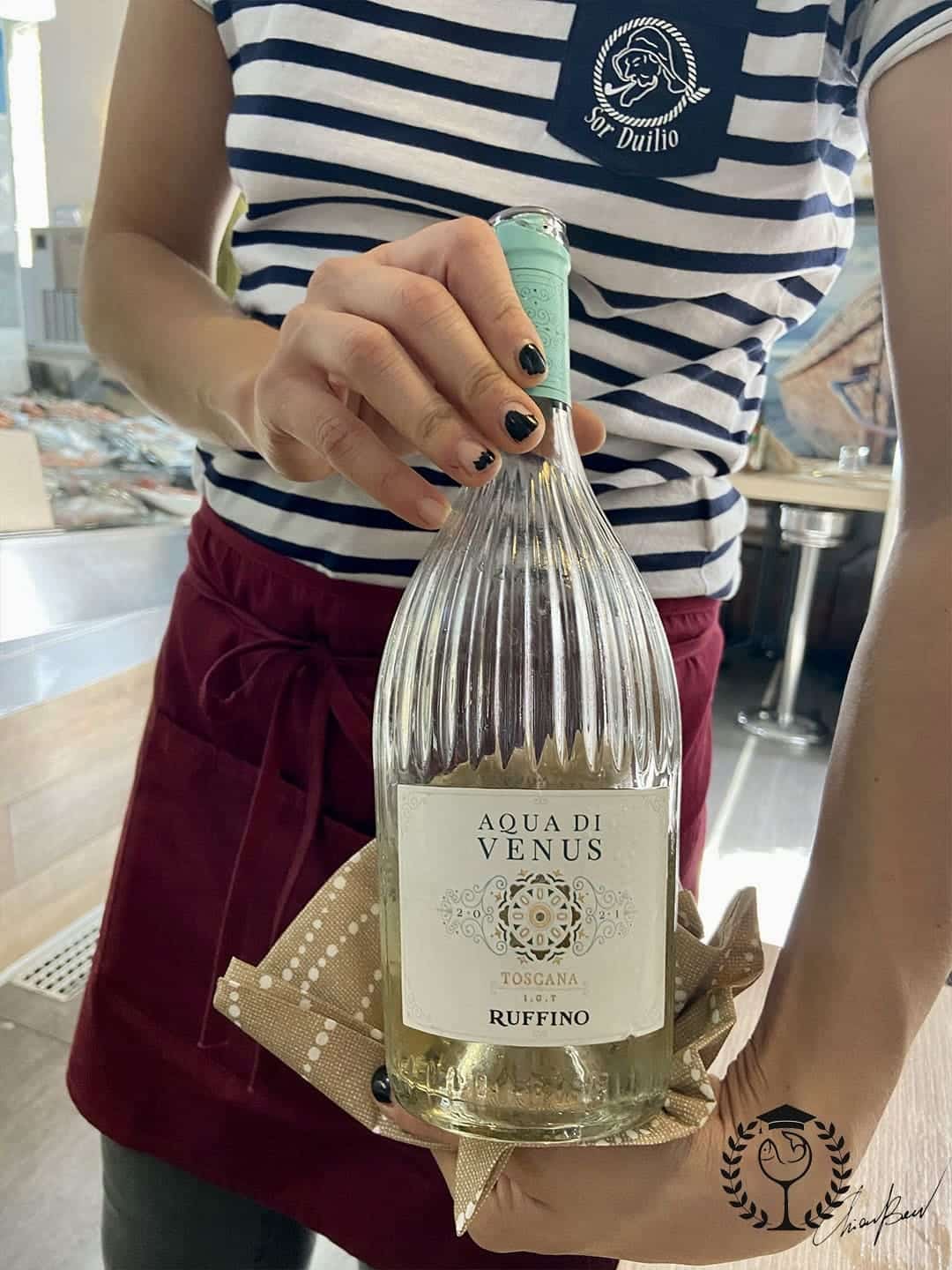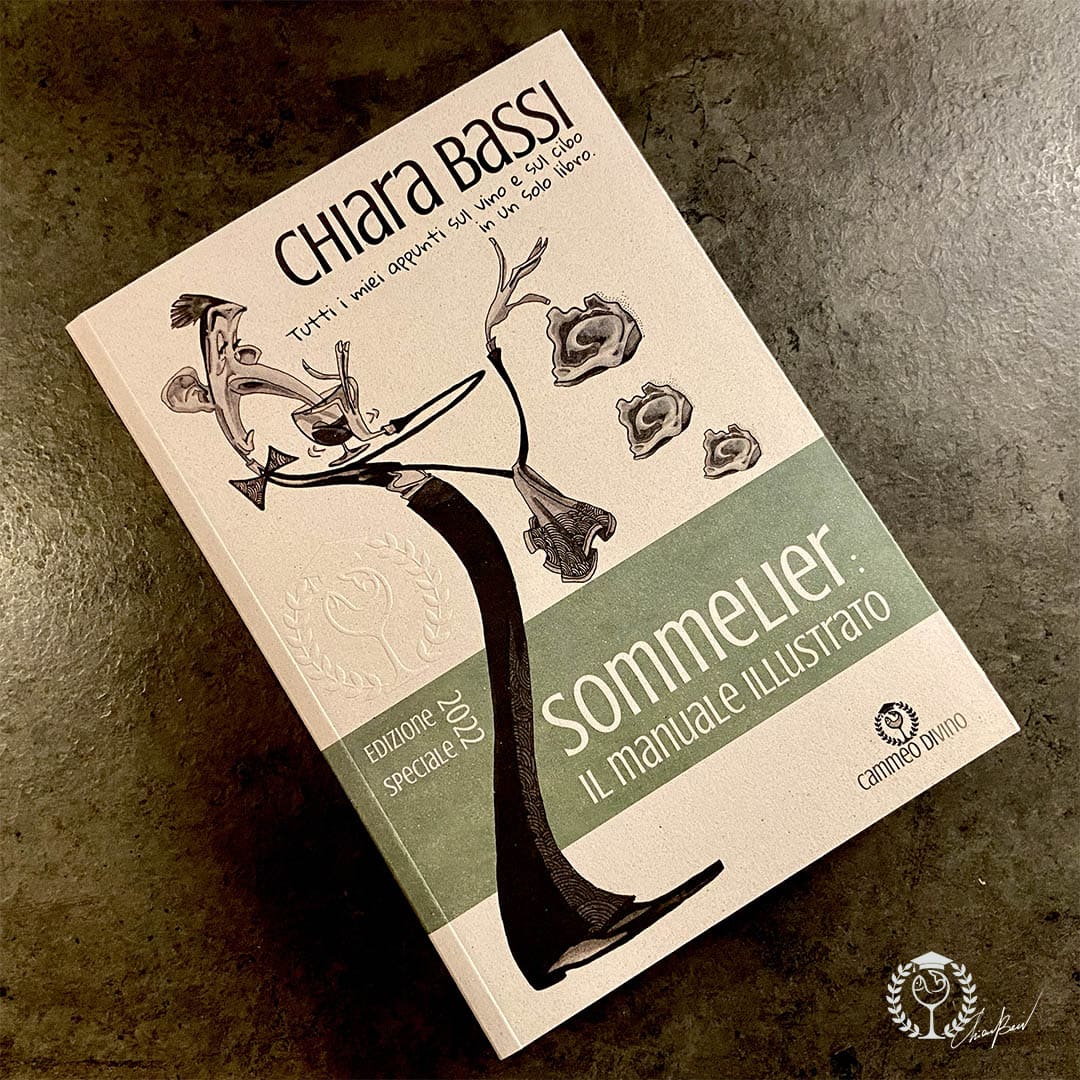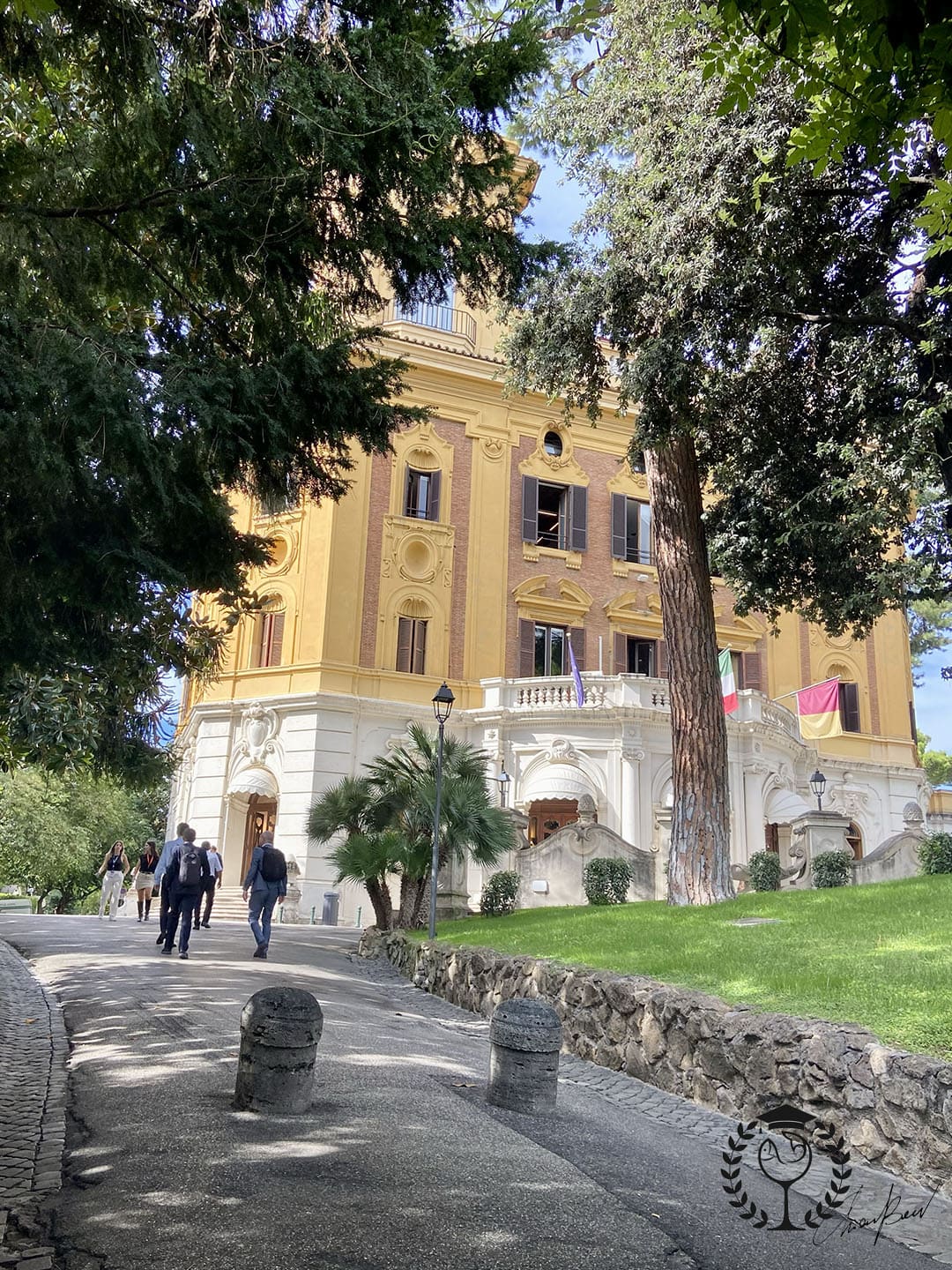It's 8:40 on a Saturday morning in early October and it's still quite warm in Rome. I have been awake for exactly three hours, which is rare for a night owl like me, let alone for the second day in a row. My iPhone tells me that I have already walked more than 5,000 steps - yesterday more than 21,000 - and that if I lived like this every day I would probably be thinner. Whatever. Luckily it doesn't know that I just had a delicious ricotta brioche at Crema & Cioccolato on Via Salara... 😄 anyway, I found a really delicious ricotta in Rome. But now I'll tell you about the first day of the Executive Course in Food and Wine Journalism of the Master in Journalism of the Luiss Guido Carli School of Journalism of Rome. I have just two hours before the start of the second lesson... which I will follow first from the train and then from the transfer.
Luiss Guido Carli School of Journalism in Rome: gastronomic criticism
The lecture, dedicated to the birth of gastronomic criticism, was given by the journalist Eleonora Cozzella and I really enjoyed it. It also gave me some interesting food for thought that I would like to share with you. When I thought of writing this article, my first objective is, as always, to inspire you to follow your dreams whatever age and whatever life you have by telling you about this master's degree at the Luiss Guido Carli School of Journalism in Rome. My second objective is to recommend a restaurant that is located in Via Adige in Rome, between the Luiss University premises in Viale Romania and the Luiss University premises in Viale Pola (where we are). This is actually something we talked about yesterday.
According to anthropologist Jacques Attali in his book "Food. A global history from origins to the future"(I just bought it, then I'll tell you what I think!) language was born out of the need to report information on where to find food. The need to exchange directions on where to find food since the earliest prehistoric communities contributed, therefore, to the birth of language itself. And in fact what I want to do now is to show you where you can find quality food if you are in the Coppadè Quarter of Rome. It can be said that although thousands of years have passed, we still have the same need today, even if this must be interpreted in a modern key: we do not have to discover sources of food as the supply of food is vast, but rather we must orient ourselves in choosing the source of food from which to draw according to criteria of compatibility with our 'religious' values on food, our economic availability and our qualitative search for taste.
You can now subscribe to my newsletter or scroll down the page to continue reading the article!
This theme actually introduced another one, namely how much the choice we make when deciding what to eat is actually a religion. As far back as prehistoric communities, the act of eating was not just an end in itself and thus solely related to nourishment, but there was a real ritualisation of the meal that has survived the passage of centuries. Today, even if we are atheists - or ignostics, as in my case - we still have a religious approach to food demonstrated by the type of diet we follow. I for example am almost a crudist, almost because I actually eat everything (except pets including horses and rabbits), but if I can choose what to eat I choose only raw food, mostly fish.
Luiss Guido Carli School of Journalism: where to eat fish in Rome in the area?
And indeed, the restaurant I want to show you is perfect for eating raw fish and I was so pleased with my lunch that I can't wait to go back there again next week! First of all, there is an oyster menu, and that alone is enough to make me happy. Then there were not all of them as they vary according to availability and seasonality. I took advice and I did very well: I discovered the Irish oyster Spéciales Julina which literally won me over with its meatiness, its generosity, its nutty flavour, its barely noticeable iodine note and a sweet tendency that contrasted beautifully with the savoury Vermentino 'Acqua di Venus' Toscana Bianco IGT by Ruffino I matched with them. By sight, I think these oysters were 2-calibre (by the way, how about reading this article on oysters?).
Let me make a note to all women: please do not leave the house with eaten nail polish because your hands are really unpleasant to look at. Especially if you have to work with the public and do something as noble as serving good wine and food, don't do it. Take better care of yourself. Coloured nail varnish is not compulsory and rather if you don't have time take it off (it takes a second, you have no excuse!) or go once a month to gel like I do and don't think about it any more. The eyes of us customers thank you.
I also ate the sea bass tartare with great pleasure. I say with great pleasure because it is unusual to find it, at least in the North where I live. And I am a glutton for it! The sea bass was very fresh, as I expect in a fishmonger's that also does cooking. I have to say that this format is my favourite, and when I see such a place, I always immediately rush to try it. The restaurant - or perhaps I should say fishmonger's - where I recommend eating if you are in the vicinity of the Luiss Guido Carli School of Journalism in Rome is Sor Duilio (Via Agri 9, open every fresh fish day, i.e. Tuesday to Saturday, 8 a.m. to 11 p.m., Thursday 8.30 a.m. to 3.30 p.m.)... I can't wait to go back again next week! I spent €34 for two large oysters, a generous tartare, a generous glass of wine, bread and water - which I didn't drink because it was Ferrarelle and I hate it besides it contains too much calcium for my poor kidneys. A price in line with the quality of the food on offer.
You can now buy my book Sommelier: the illustrated manual or scroll down the page to continue reading the article!
Book 'Sommelier: the Illustrated Manual' Special Edition 2022
All my notes on wine and food in one book.
€ 26,00 – € 30,00 VAT included!
Afterwards I went to the Luiss Guido Carli University in Rome, which is really beautiful, where I found 11 course colleagues who are as passionate about wine and food as I am: fantastic! The first lesson also had Chef Cristiano Tomei (Eleonora Cozzella did the preface of "My grandfather used to take me to make herbs: 20 years of recipes and research in the kitchen") and I would like to point out that when he connected he was tiny on the screen, so I came up with a "How do we make it bigger?"which made me laugh a lot (not just me, in fact)... especially because he said shortly afterwards that cooking should be fuckable and not masturbatory... 😄 Actually, I particularly liked this concept: today there is a tendency - thanks to the large number of cooking programmes that rage on any channel at any time of day, not to mention the great success of Masterchef - to consider the chef a semi-divine figure that Achilles shunned. In reality, a chef - as Cristiano Tomei himself said - is not one who gives open-hearted speeches and should take his work more lightly. We gastronomic critics should be able to establish a constructive dialogue with chefs that, while respecting their professionalism, is also capable of recounting their mistakes and failures in order to provide them with opportunities for growth. After all, a chef, and in particular a cook, should cook to make people happy and not to exalt himself...
I met the journalist Giorgio Casadio of Il Sole 24ore and of the steering committee of the School of Journalism, and I discovered that he is originally from Ravenna like me. Of course, Rome is beautiful... but our Ravenna is no joke either! And not even when it comes to fresh fish... by the way, is it normal that at 9:40 in the morning I'm thinking about Ravenna sauté mussels? 😄
Cheers 🍷
Chiara

